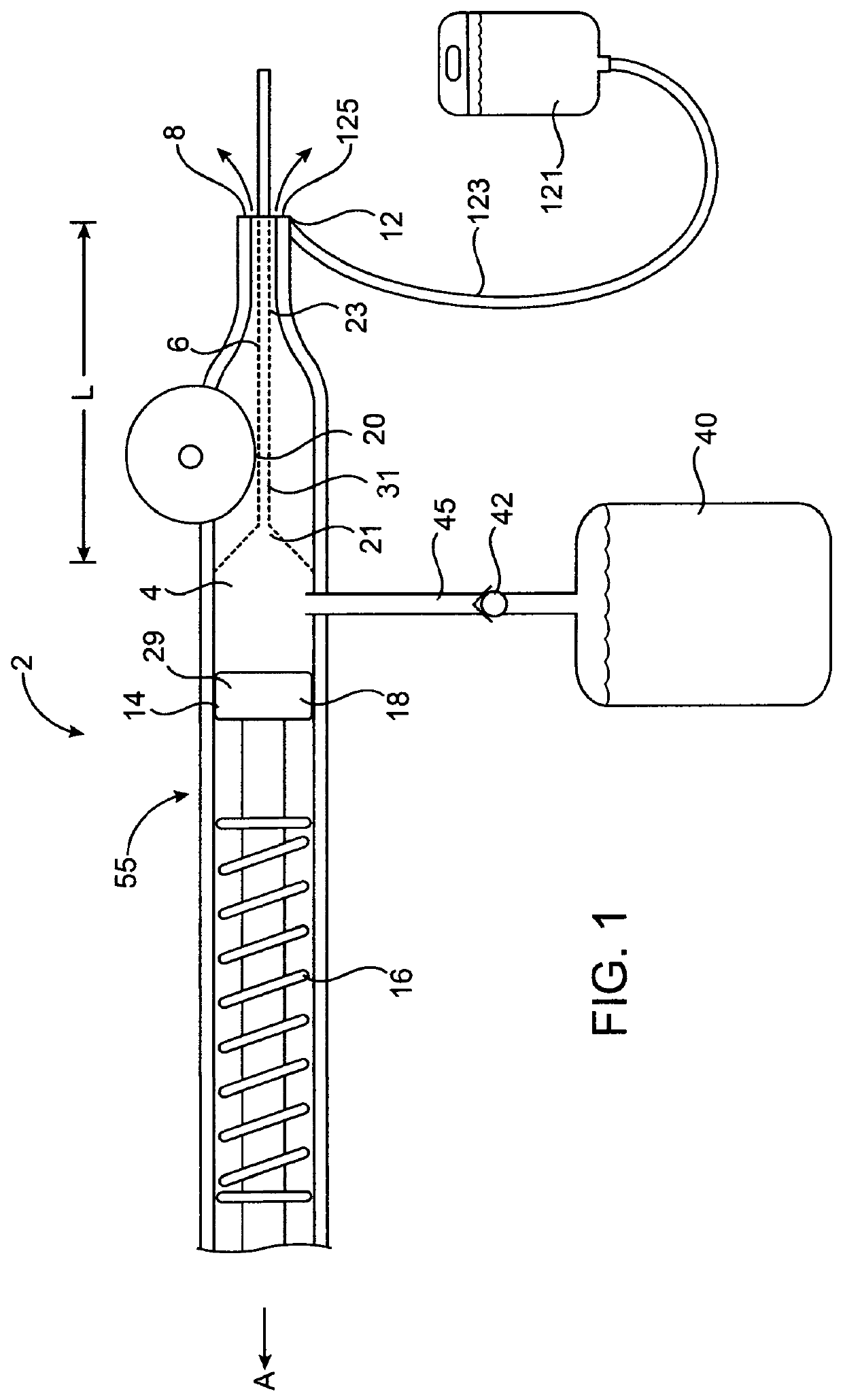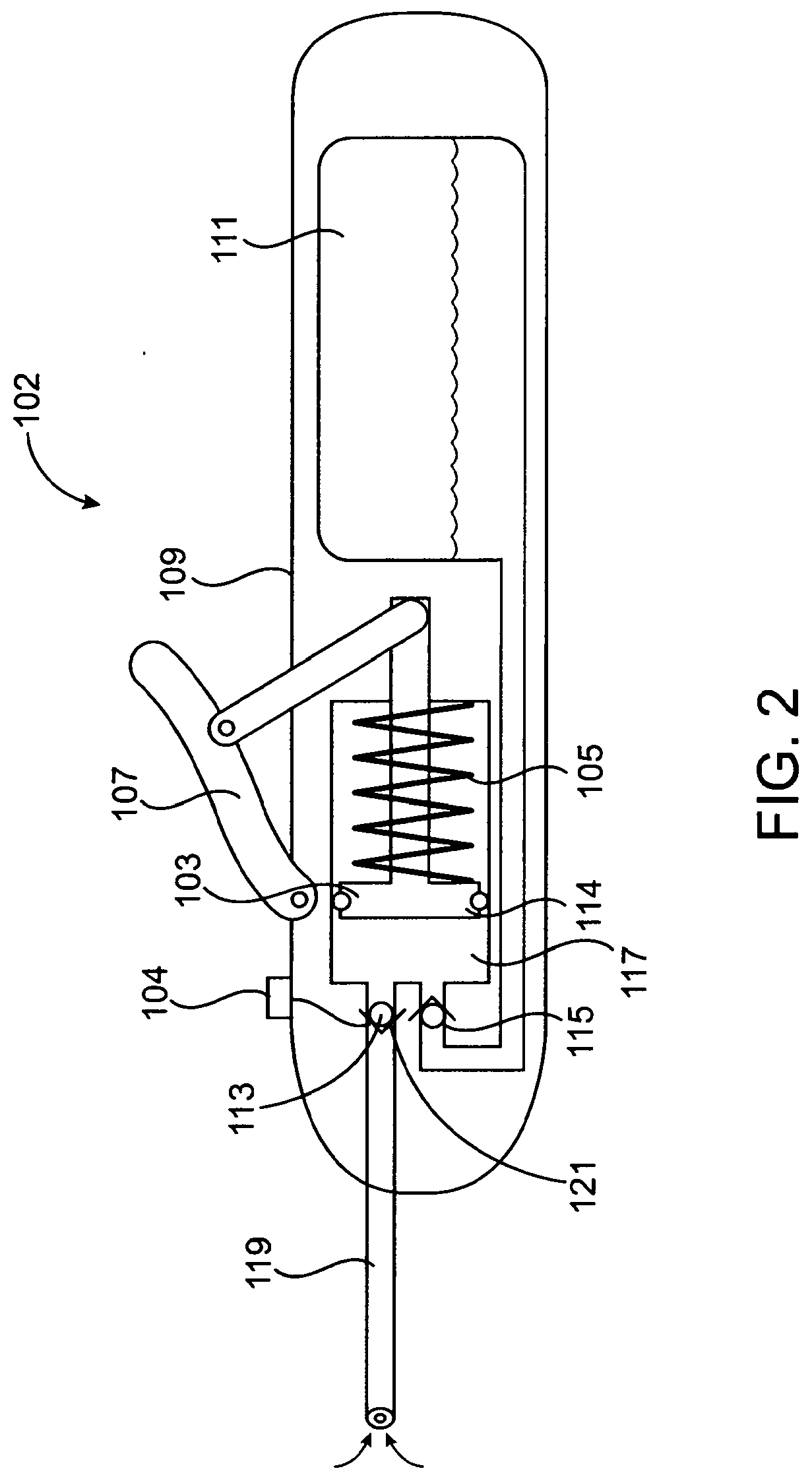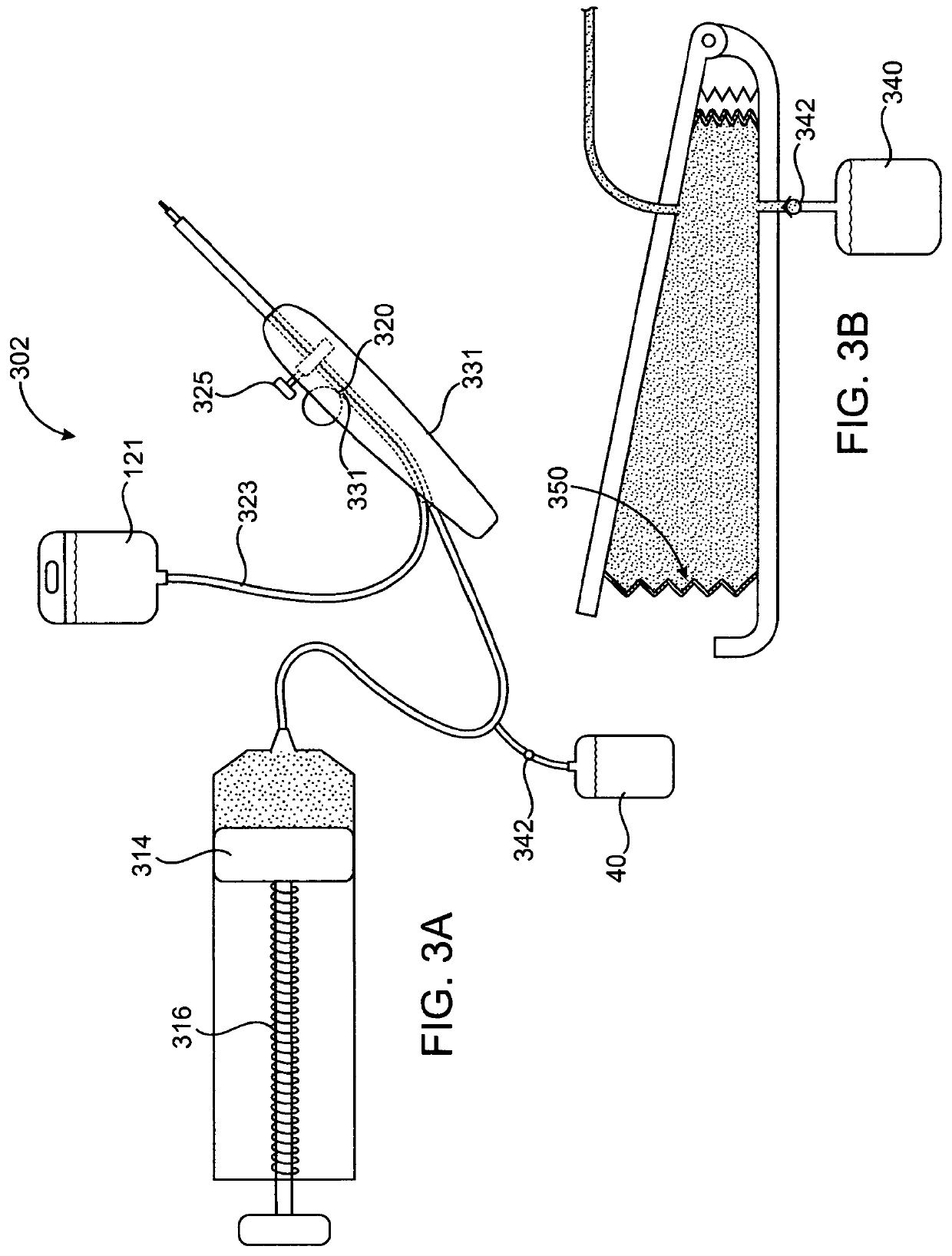Devices and methods for ocular surgery
a technology for ocular surgery and suction tip, which is applied in the field of ocular surgery devices and methods, can solve the problems of affecting the responsiveness of suction tip, unwanted complications of lens aspiration, and deleterious effect on tissue, so as to improve the responsiveness, reduce the length of lines, and reduce the volume of suction.
- Summary
- Abstract
- Description
- Claims
- Application Information
AI Technical Summary
Benefits of technology
Problems solved by technology
Method used
Image
Examples
Embodiment Construction
[0061]During cataract surgery it is desirable to have a supply of balanced saline solution (BSS) delivered to the eye as well as a supply of suction to remove fluids and other materials. Certain ophthalmic surgical tips have the ability to inspirate and aspirate fluid through dual lumen designs. These devices must be connected to a supply of suction and pressurized BSS fluid.
[0062]In some embodiments, the invented device includes the ability to provide suction or BSS pressurized fluid through simple mechanisms, some of which may be manually powered or regulated. In FIG. 1 a separate plunger device is shown which may be depressed in order to create a vacuum which provides suction when connected to the hand piece. The hand piece may also be connected to a pressurized BSS source such as a hanging bag or any number of other pressurized sources such as spring loaded syringes and the like. Alternatively vacuum may be supplied by any number of other mechanisms such as a bellows mechanism, ...
PUM
 Login to View More
Login to View More Abstract
Description
Claims
Application Information
 Login to View More
Login to View More - R&D
- Intellectual Property
- Life Sciences
- Materials
- Tech Scout
- Unparalleled Data Quality
- Higher Quality Content
- 60% Fewer Hallucinations
Browse by: Latest US Patents, China's latest patents, Technical Efficacy Thesaurus, Application Domain, Technology Topic, Popular Technical Reports.
© 2025 PatSnap. All rights reserved.Legal|Privacy policy|Modern Slavery Act Transparency Statement|Sitemap|About US| Contact US: help@patsnap.com



